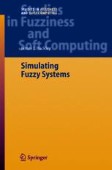Search
Search Results
-
Optimizing a Production Line
The simple production line considered in this chapter is shown in Fig. 20.1. This problem has been adapted from an example in [1]. This situation is...
-
Queuing I: One-Step Calculations
In this chapter we show situations where simulation can produce the same results as fuzzy calculations which employ the extension principle. We argue...
-
Simulation Programs
In this chapter we present some of the GPSS programs used in Chaps. 9–26. We had to omit many programs in order to keep this chapter. less that 20...
-
Summary and Conclusions
The first objective of this book is to explain how many systems naturally become fuzzy systems. The second objective is to show how regular (crisp)...
-
Rhombohedral PZT Thin Films Prepared by Sputtering
PZT thin films with a rhombohedral perovskite structure were successfully grown on (111) PLT/Pt/Ti/SiO2/Si and (111) Ir/SiO2/Si substrates. The...
-
Correlation Between Domain Structures and Dielectric Properties in Single Crystals of Ferroelectric Solid Solutions
In the present chapter, the growth of single crystals in relaxor–PbTiO3 (PT) solid solution system by the flux method and the solution Bridgman...
-
Relaxor Superlattices: Artificial Control of the Ordered–Disordered State of B-Site Ions in Perovskites
We have developed a new superlattice technique to artificially control the B-site ordering state. The technique has been applied to Ba(Zr0.2Ti0.8)O3,...
-
Pb-Based Ferroelectric Thin Films Prepared by MOCVD
This Chapter focuses on the preparation and ferroelectric properties of Pb-based thin films and nanostructures. First, the growth behavior of...
-
Chemical Solution Depositionof Layer-Structured Ferroelectric Thin Films
Ferroelectric rare-earth-doped Bi4Ti3O12 thin films have been successfully prepared on Si-based substrates by using metallo-organic precursor...
-
Few-Cycle Pulses Directly from a Laser
Advances in ultrashort-pulse laser technology have led to the generation of few-cycle optical pulses directly from oscillators at high repetition...
-
Carrier–Envelope Phase Stabilization of Single and Multiple Femtosecond Lasers
The basic concepts, technical implementation, and known limitations of actively stabilizing the carrier–envelope phase of a few-cycle pulse train are...
-
Monolithic Silicon Light Sources
Monolithic silicon light sources (LEDs and lasers) could have a significant impact when integrated on silicon chips. After a general introduction to...
-
5. Simulation of Active and Nonlinear Photonic Nano-Materials in the Finite-Difference Time-Domain (FDTD) Framework
A numerical method is presented that unites three-dimensional finite-differnce time-domain (FDTD) computer simulations of active, nonlinear photonic...
-
Machine Shop I
The queuing system in this chapter is shown in Fig. 11.1. This application was adopted from a problem in ([1], p.594). We continue this problem in...
-
From Genetic Variation to Probabilistic Modeling
Genetic algorithms ⦓GAs) [53, 83] are stochastic optimization methods inspired by natural evolution and genetics. Over the last few decades, GAs have...
-
Inventory Control II
This chapter continues the inventory control problem studied in the previous chapter. The new system is shown in Fig. 17.1. We have added two things...
-
Project Network Model
The project network diagram is in Fig. 26.1. This problem is modelled after an example in [2]. The project consists of various jobs that must be...
-
Queuing II: No One-Step Calculations
In this chapter we will study the fuzzy system shown in Fig. 5.1 now reproduced as Fig. 9.1. This example was adapted from an example in [1]. The...
-
Modular Neural Networks
We describe in this chapter the basic concepts, theory and algorithms of modular and ensemble neural networks. We will also give particular attention...
-
Type-1 Fuzzy Logic
This chapter introduces the basic concepts, notation, and basic operations for the type-1 fuzzy sets that will be needed in the following chapters....
